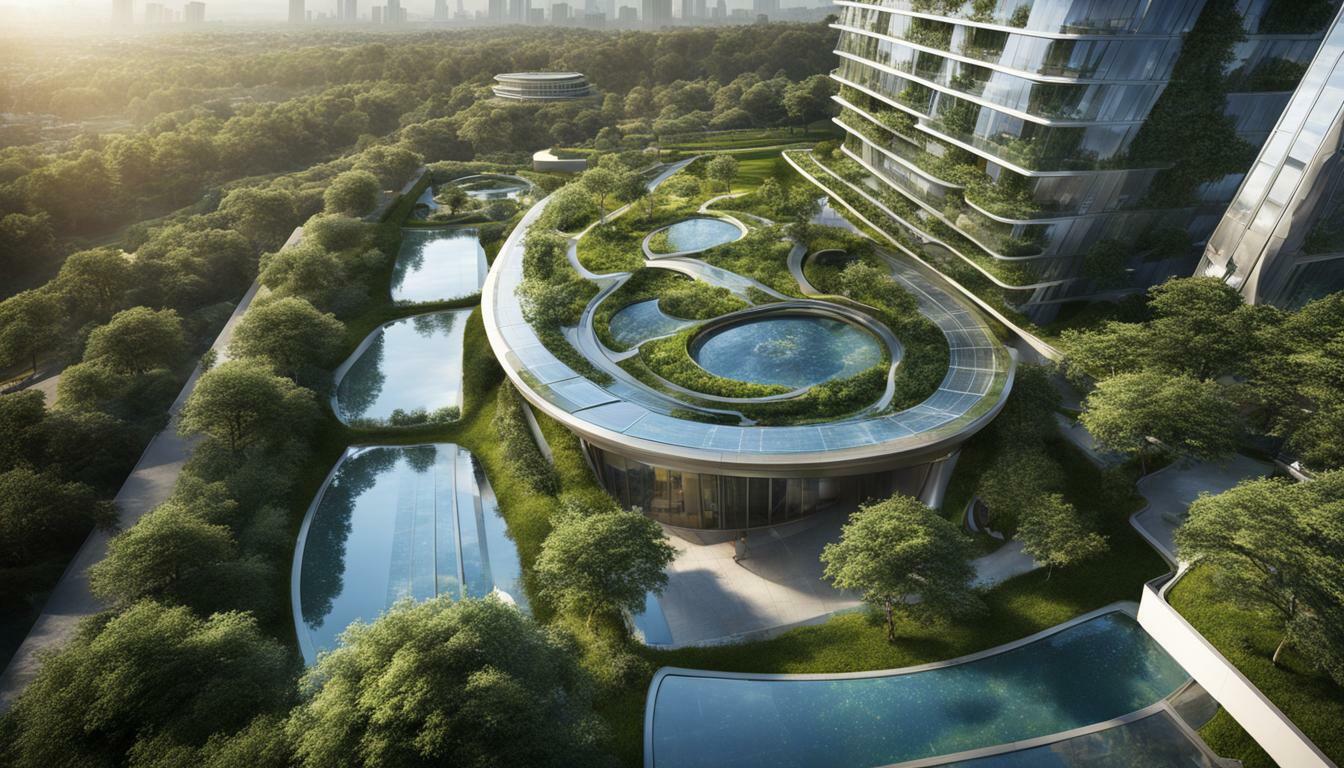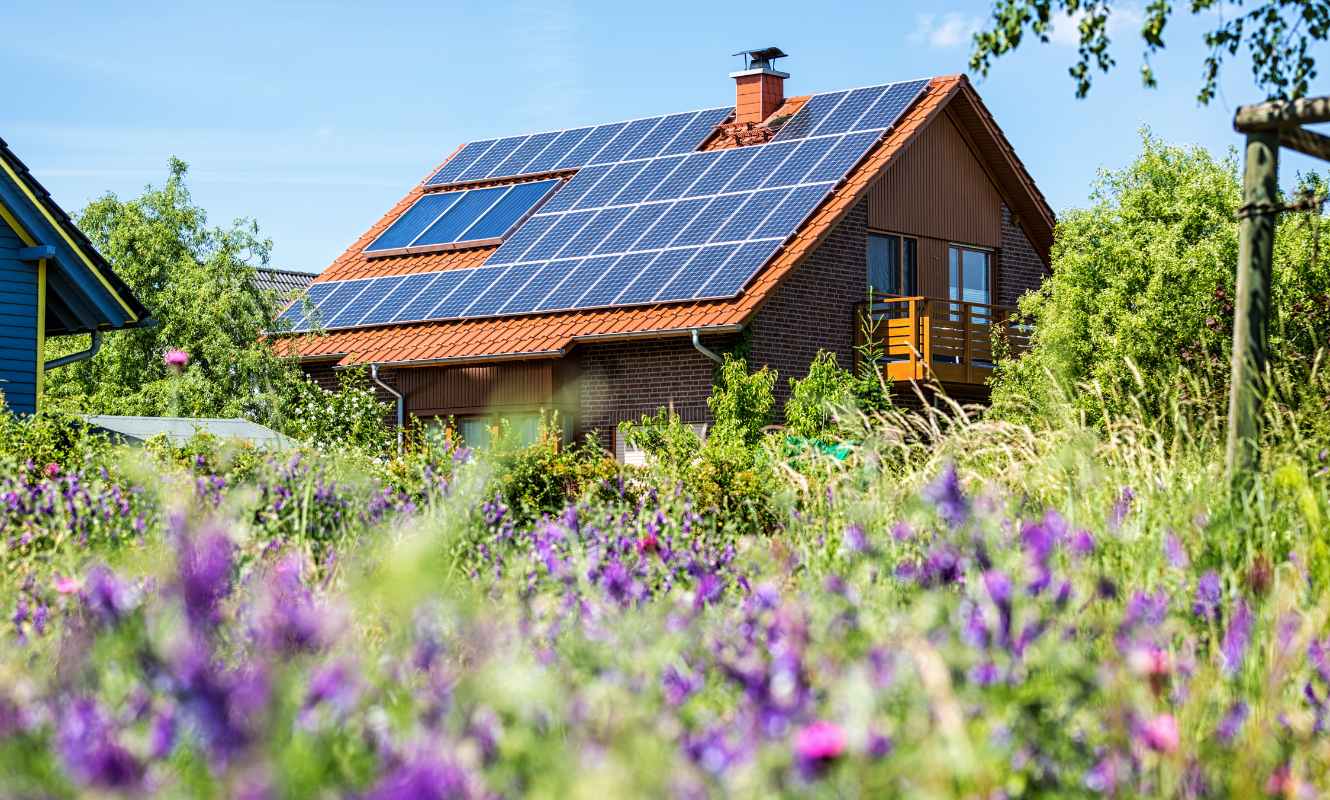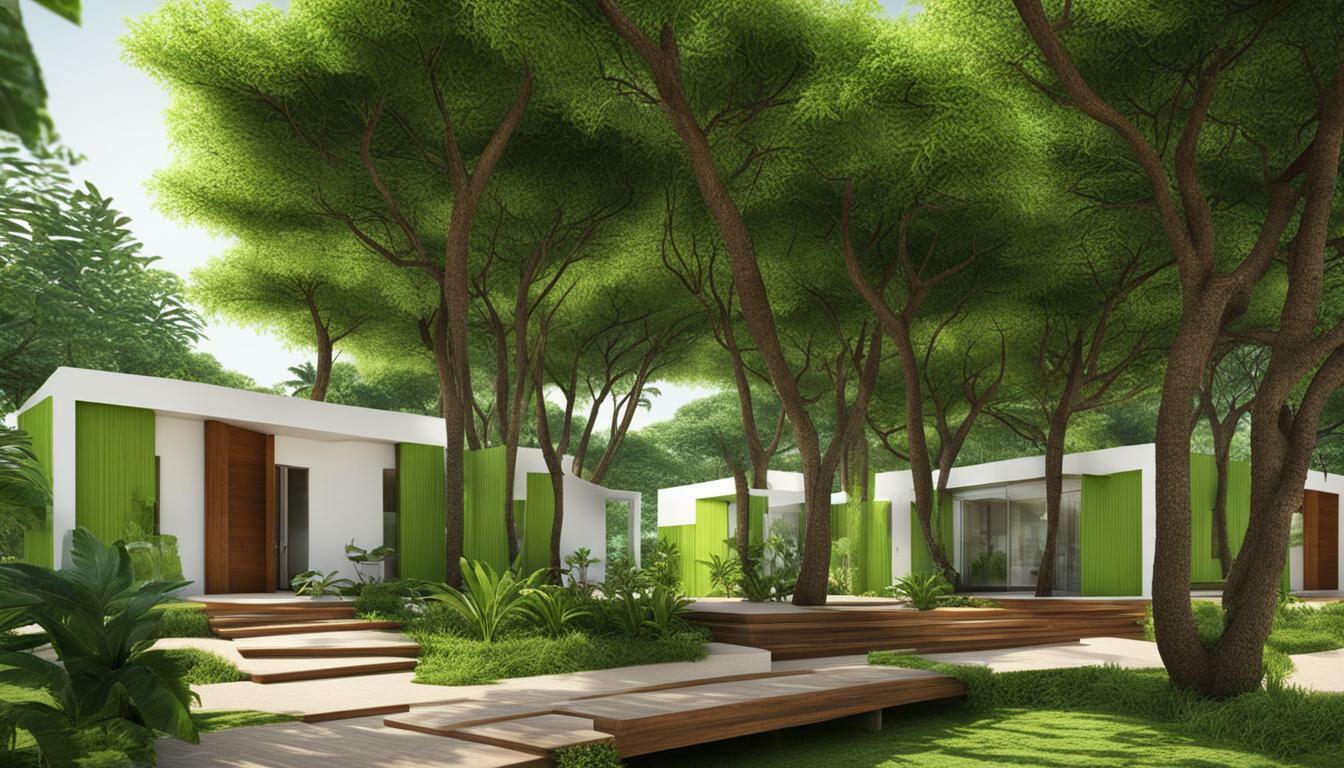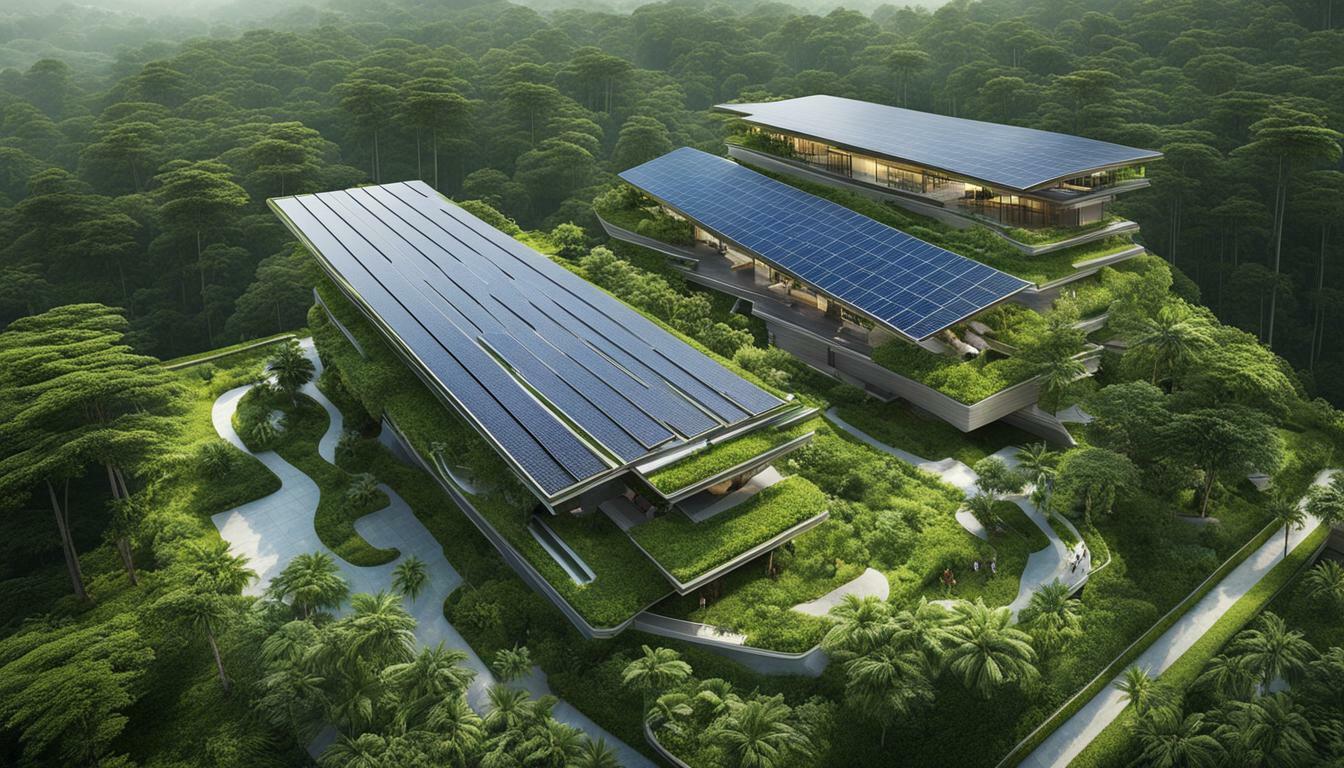Cambodia Top Green Buildings Guide
Welcome to our guide on Cambodia’s Top Green Buildings. Discover the innovative designs and sustainable features that make these structures stand out in the Khmer Kingdom.
- Sustainable architecture plays a crucial role in Cambodia’s green building industry.
- Eco-friendly construction practices are vital for promoting environmentally friendly architecture.
- The Cambodian Green Building Council (CamGBC) is actively involved in advocating for green building design and sustainable development.
- The partnership between the Global Green Growth Institute (GGGI) and CamGBC aims to implement green building rating and financing schemes to support sustainable construction in Cambodia.
- Energy-efficient buildings in Cambodia utilize renewable energy and adhere to green construction practices, contributing to a greener future.
Explore our guide to learn more about Cambodia’s top green buildings and the positive impact they have on sustainable development and eco-friendly construction.
The Need for Sustainable Development in Cambodia
With the growing concern for the environment and the need for sustainable development, Cambodia has embraced green construction practices and environmentally friendly architecture to minimize its carbon footprint. As the largest final energy consumer in the country, the building sector has a significant impact on energy consumption and greenhouse gas emissions. In 2017, the sector accounted for 52% of total energy consumption.
The Cambodian Green Building Council (CamGBC) plays a vital role in transforming the building industry by engaging policymakers and professionals to promote sustainable practices. Their aim is to make green buildings accessible to all Cambodians, ensuring a greener and more sustainable future for the country.
The CamGBC has joined forces with the Global Green Growth Institute (GGGI) to further their mission. This partnership will support the operationalization of the Green Building Council and the launch of Cambodia-specific green building rating and financing schemes. Through these initiatives, the CamGBC and GGGI will drive the adoption of energy-efficient building practices, renewable energy integration, and the reduction of environmental impact in the construction industry.

| Key Facts |
|---|
| The building sector in Cambodia accounted for 52% of total energy consumption in 2017. |
| The CamGBC aims to make green buildings accessible to all Cambodians. |
| The partnership between CamGBC and GGGI will support the launch of Cambodia-specific green building rating and financing schemes. |
By promoting sustainable development, green construction practices, and environmentally friendly architecture, Cambodia is taking significant steps towards a more sustainable future. Through the efforts of organizations like the CamGBC and their partnership with GGGI, the construction industry in Cambodia is becoming more environmentally conscious and actively working towards reducing its carbon footprint.
The Role of the CamGBC in Promoting Green Building
The Cambodian Green Building Council (CamGBC) plays a vital role in championing green building design and sustainable architecture in the country, striving to transform the building sector and make green buildings accessible to all Cambodians. As the largest final energy consumer in Cambodia, accounting for 52% of total consumption in 2017, the building sector holds immense potential for reducing energy consumption and mitigating the environmental impact.
The CamGBC aims to engage policymakers and professionals to promote sustainable construction practices and eco-friendly building designs. By collaborating with industry stakeholders, the council seeks to raise awareness about the benefits of green buildings and drive the adoption of sustainable building practices across Cambodia.
Through various initiatives, the CamGBC provides valuable resources and guidance to architects, engineers, and developers in implementing green building strategies. This includes advocating for the use of renewable energy sources, promoting energy-efficient technologies, and encouraging the use of environmentally friendly materials.
CamGBC Initiatives and Impact
The CamGBC has successfully organized workshops, seminars, and training programs to educate professionals and decision-makers on the importance of green building design. These initiatives have helped foster a network of green building practitioners and experts, enhancing knowledge sharing and collaboration within the industry.

| Year | Initiative | Impact |
|---|---|---|
| 2018 | Development of green building rating system | Established a framework for evaluating and certifying the sustainability performance of buildings |
| 2019 | Partnership with GGGI | Enabled the launch of Cambodia-specific green building rating and financing schemes |
| 2020 | Inclusion of green building practices in national policies | Contributed to the integration of sustainable construction practices into government regulations |
The CamGBC’s efforts have not only resulted in the construction of eco-friendly buildings but have also influenced policy and regulatory changes. By collaborating with international organizations and government agencies, the council has been instrumental in shaping Cambodia’s green building landscape and driving sustainable development in the country.
Partnership between GGGI and CamGBC
The Global Green Growth Institute (GGGI) has joined forces with the Cambodian Green Building Council (CamGBC) to drive the adoption of green building practices in Cambodia through the introduction of country-specific green building rating and financing schemes.
The building sector in Cambodia is the largest final energy consumer, accounting for 52% of total consumption in 2017. Recognizing the urgent need to address this issue, the CamGBC aims to engage policymakers and professionals to transform the industry and make green buildings available to all Cambodians. The partnership between GGGI and CamGBC will support the operationalization of the Green Building Council and the launch of Cambodia-specific green building rating and financing schemes.
This collaboration is crucial in promoting sustainable development and addressing environmental challenges in Cambodia. By implementing green building rating systems, the GGGI and CamGBC will encourage the construction of energy-efficient and environmentally friendly buildings, reducing the sector’s carbon footprint and resource consumption. Moreover, the introduction of financing schemes will facilitate easier access to funds for green building projects, making them more financially viable and attractive to investors.
The GGGI and CamGBC firmly believe that this partnership will not only contribute to the preservation of Cambodia’s natural resources but also provide economic opportunities and improve the quality of life for its citizens. By promoting sustainable building practices, they aim to set an example for other countries in the region and create a more sustainable future for Cambodia.

| Benefits of Partnership between GGGI and CamGBC: |
|---|
| 1. Promotion of sustainable development in Cambodia |
| 2. Reduction of carbon footprint and resource consumption in the building sector |
| 3. Access to financing for green building projects |
| 4. Economic opportunities and improved quality of life for Cambodians |
Energy-Efficient Buildings in Cambodia
Discover the impressive array of energy-efficient buildings in Cambodia, where renewable energy sources and green construction practices are seamlessly integrated to create sustainable and environmentally conscious structures. This Southeast Asian country is embracing the concept of green building design to address the challenges of rapid urbanization and the need for sustainable development.
One prominent example is the Vattanac Capital Tower in Phnom Penh, the tallest building in Cambodia. Designed with energy efficiency in mind, it incorporates advanced technologies like double-glazed low-E glass and a building management system to optimize energy consumption. The tower also features an innovative natural ventilation system and utilizes renewable energy through solar panels and a rainwater harvesting system.
Another noteworthy project is the Baitong Hotel and Resort in Kampot, which focuses on eco-friendly construction practices. The resort utilizes sustainable materials such as bamboo and recycled timber, minimizing its environmental impact. It emphasizes energy efficiency with LED lighting, solar water heaters, and natural ventilation design. The Baitong Hotel and Resort sets an example of how green building design can be integrated into the hospitality industry.
| Energy-Efficient Buildings in Cambodia | Location | Notable Features |
|---|---|---|
| Vattanac Capital Tower | Phnom Penh | Double-glazed low-E glass, natural ventilation system, solar panels, rainwater harvesting |
| Baitong Hotel and Resort | Kampot | Bamboo and recycled timber construction, LED lighting, solar water heaters, natural ventilation |
The Cambodian Green Building Council (CamGBC), in partnership with the Global Green Growth Institute (GGGI), plays a vital role in promoting energy-efficient buildings in the country. Through the operationalization of the Green Building Council and the launch of Cambodia-specific green building rating and financing schemes, both organizations aim to transform the building industry and make sustainable structures accessible to all Cambodians. By integrating renewable energy sources and adopting green construction practices, Cambodia is paving the way for a greener and more sustainable future.

Sources:
– Vattanac Capital: www.vattanacproperties.com
– Baitong Hotel and Resort: www.baitonghotel.com
Conclusion
As Cambodia continues to prioritize sustainable development and eco-friendly construction, the country’s top green buildings exemplify the successful integration of sustainable architecture and environmental consciousness into urban landscapes. The Global Green Growth Institute (GGGI) has signed a Memorandum of Understanding with the Cambodian Green Building Council (CamGBC) to promote green building in Cambodia, recognizing the need to transform the building sector, which accounted for 52% of total energy consumption in 2017.
The CamGBC plays a crucial role in engaging policymakers and professionals to drive the adoption of green construction practices and make environmentally friendly architecture accessible to all Cambodians. Through its partnership with the GGGI, the CamGBC aims to operationalize the Green Building Council and launch Cambodia-specific green building rating and financing schemes.
Energy-efficient buildings have emerged as shining examples of sustainable development in Cambodia. These structures prioritize the use of renewable energy sources and adhere to green construction practices, significantly reducing their environmental impact. By showcasing these innovative buildings, Cambodia not only demonstrates its commitment to sustainable development but also inspires other nations to embrace eco-friendly construction in their urban landscapes.
In conclusion, Cambodia’s top green buildings are a testament to the country’s dedication to sustainable development and eco-friendly construction. Through the collaboration between the GGGI and CamGBC, Cambodia is taking significant steps towards transforming its building industry and creating a greener future for its citizens. By promoting sustainable architecture and environmental consciousness, Cambodia is setting a positive example for the rest of the world to follow in the pursuit of a more sustainable and environmentally friendly future.
FAQ
Q: What is the significance of sustainable architecture and eco-friendly construction in Cambodia?
A: Sustainable architecture and eco-friendly construction practices play a crucial role in promoting a greener and more environmentally conscious built environment in Cambodia. They help reduce energy consumption, decrease carbon emissions, and conserve natural resources, contributing to a sustainable future for the country.
Q: What is the role of the Cambodian Green Building Council (CamGBC) in promoting green building design and sustainable architecture?
A: The Cambodian Green Building Council (CamGBC) plays a key role in advocating for green building design and sustainable architecture in Cambodia. It engages policymakers and professionals in the industry to transform the construction sector towards more environmentally friendly practices. The CamGBC aims to make green buildings accessible to all Cambodians by promoting awareness, providing training, and implementing green building rating and financing schemes.
Q: How does the partnership between the Global Green Growth Institute (GGGI) and CamGBC support green building initiatives in Cambodia?
A: The partnership between the Global Green Growth Institute (GGGI) and the Cambodian Green Building Council (CamGBC) facilitates the operationalization of the Green Building Council in Cambodia. It also enables the launch of Cambodia-specific green building rating and financing schemes. The collaboration between GGGI and CamGBC promotes sustainable building practices, encourages energy-efficient designs, and improves access to financing for green construction projects.
Q: Can you provide examples of energy-efficient buildings in Cambodia?
A: Cambodia has several notable examples of energy-efficient buildings that prioritize sustainability and green construction practices. Some examples include the Vann Molyvann Institute for Water Management and Climate Change, which incorporates solar panels and natural ventilation systems, and the Green Building Learning Center, which utilizes rainwater harvesting and energy-efficient lighting. These buildings showcase the successful integration of renewable energy and environmentally conscious design principles in Cambodia.
Q: What are the benefits of implementing green construction practices and sustainable development in Cambodia?
A: Implementing green construction practices and sustainable development in Cambodia brings numerous benefits. It helps reduce energy consumption, lower greenhouse gas emissions, and mitigate the environmental impact of the building sector. Additionally, sustainable development promotes social equity, improves the quality of life for communities, and contributes to a resilient and thriving economy in Cambodia.









Cambodia Green Building History
2 years ago[…] You may also be interested in Cambodia Top Green Buildings. […]